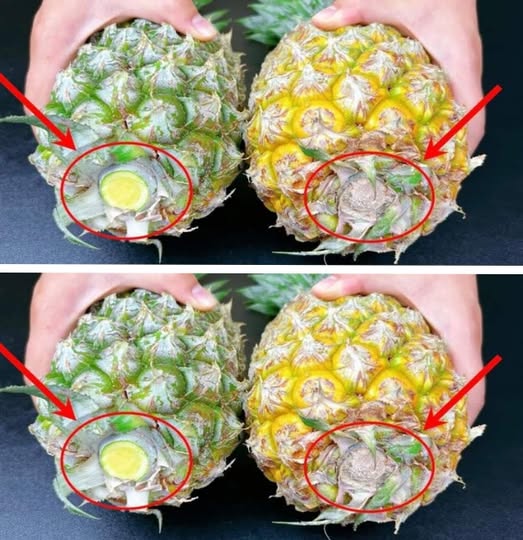ADVERTISEMENT
How to Pick a Sweet Pineapple: Tips for Choosing the Perfect Fruit
Pineapples are a tropical delight, loved for their sweet, tangy, and refreshing flavor. Whether you’re preparing a fruit salad, making a tropical smoothie, or just enjoying it on its own, picking the perfect pineapple is essential to ensure you get the sweetest, juiciest fruit possible. But with their tough exterior and spiky leaves, selecting the right pineapple can feel like a challenge. Don’t worry! We’re here to guide you through the process of choosing the perfect sweet pineapple every time.
Here’s everything you need to know to pick a ripe, sweet pineapple that will elevate your dishes and refresh your taste buds.
1. Look for the Right Color
The color of the pineapple can tell you a lot about its ripeness. While pineapples do not continue to ripen significantly after being picked, they do change color as they mature. Look for a pineapple that has a rich, golden color, particularly at the base of the fruit.
- A golden yellow color indicates the fruit is ripe and sweet.
- Green pineapples are often still unripe and can be tart. However, some pineapple varieties remain slightly green even when ripe, so color alone isn’t always a definitive factor.
Make sure to look for an even color across the pineapple—avoid ones with large green or dark spots, which could indicate they are overripe or under-ripened.
2. Smell the Pineapple
One of the best ways to check if a pineapple is sweet is to smell it. Hold the fruit up to your nose and inhale near the base. A ripe pineapple will have a sweet, fragrant aroma that smells fresh and tropical.
- A strong, sweet fragrance at the base is a good sign of ripeness and indicates that the pineapple will be flavorful.
- If there’s no smell, it could be an indication that the pineapple isn’t ripe enough.
- Fermented or sour smells indicate over-ripeness or that the fruit is beginning to spoil.
3. Check the Feel of the Pineapple
The feel of the pineapple is a good indicator of its ripeness as well. When choosing a pineapple, give it a gentle squeeze and check for the following:
- Slight give: A ripe pineapple should give a little when squeezed, but it should not be mushy. It should feel firm yet slightly soft, particularly near the base.
- Hard and rigid: If the pineapple feels hard, it is likely underripe.
- Overly soft spots: If the pineapple has soft, mushy spots, it may be overripe or starting to spoil.
A little give around the eyes (the bumps on the pineapple’s surface) is a sign of sweetness and ripeness.
4. Look at the Leaves
The leaves of the pineapple can also give you a clue about its ripeness. While the leaves don’t directly affect the sweetness, they can indicate the fruit’s freshness.
- Green, healthy leaves: Healthy green leaves are usually a sign that the pineapple was harvested at the right time.
- Wilted or dry leaves: If the leaves look dried out or are easily falling off, the pineapple may be overripe or past its prime.
- Easy-to-pull leaves: If you can easily pull a leaf from the crown, it could indicate that the pineapple is overripe or starting to dry out.
- For Complete Cooking STEPS Please Head On Over To Next Page Or Open button (>) and don’t forget to SHARE with your Facebook friends
